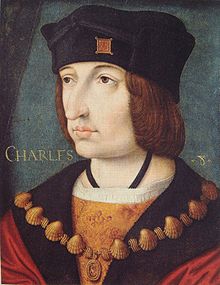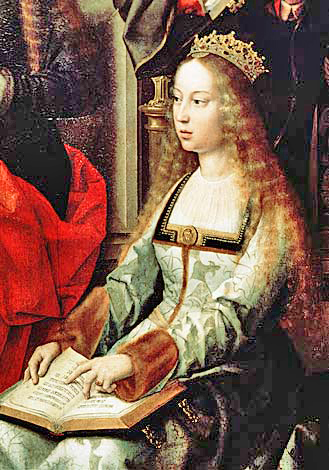The Mischief-Maker
James IV: Using Perkin Warbeck to Embarrass Henry VII
Chapter 3 : Political Manoeuvrings
The French had supported Perkin because Henry VII had invaded in the autumn of 1492. It was his only war. Henry was not by nature or political inclination an aggressive man but an alliance with Maximilian of Austria, who was keen to recover lands in northern France, had forced his hand. After early victories, Henry soon made peace with Charles VIII, much to his Austrian ally's annoyance.

The French king had his eye on expansion into Italy and was happy to reach an accommodation with England. Part of this meant abandoning Perkin Warbeck. But the young Flemish imposter and his band of Yorkists were far from friendless. By Christmas 1492 they were comfortably ensconced in the court of Margaret of Burgundy, Edward IV's youngest sister, at Malines in what is now Belgium. Margaret's support gave Warbeck much more than material comfort. It provided him with the unqualified approval of a woman who accepted him as her nephew. For five more years, he would be a bane in the life of Henry Tudor.
The duchess of Burgundy, memorably described in Edward Hall's Chronicle as 'that pestiferous serpent lady' was truly a formidable woman. The widow of Charles the Bold was then in her mid-forties and childless. She had been Charles's third wife and her marriage to him, which underlined the long-term relationship between England and the Low Countries, was the greatest international success of Edward IV's otherwise somewhat chequered diplomatic policy.
Well-educated and cultured, Margaret had stayed on in Burgundy after her husband's death. She was a wealthy woman with influence, the guardian of her step-daughter, Mary, and she saw no reason to exchange the lavish courts of Burgundy for a return to England. She might never have made much impact on the European scene had it not been for her bitterness at the overthrow of her youngest brother, Richard III, in 1485. Margaret's hatred of Henry Tudor was visceral and she was determined to cause him all the trouble she could, despite the fact that her niece, Elizabeth of York, was Henry's queen.

We shall never know if she genuinely believed that Perkin was her nephew, escaped from his would-be murderers at the Tower of London and protected by shadowy figures during nearly ten years of hiding in Europe. The implausibility of Perkin's story was not something she wished to address. Indeed, she claimed to have recognised him as Richard of York the moment she saw him, even though he had been a small child when they last met.
'I recognised him as easily as if I had seen him yesterday or the day before' she wrote to Isabella of Castile. Perhaps she wanted to believe, seeing in this attractive young man a glimpse of her glorious Yorkist past. Those days were gone but Margaret's devotion to her dynasty outweighed all else.
